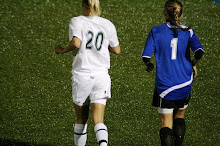
Oh baby you, got those reflexes
but you say it's postural
but you say it's primitive
The palmer's grasp is in the first four months
you wrap your fingers around but you don't use your thumb
(sway to music while making a fist without thumb) Kelsey and Katie
When you move my head, my body goes too
it's called righting and you better see that fool
(tilt pretend baby and get it to move its head) Kelsey and Katie
Another kind of righting is when you move my body
My head will go with it, i swear that to you mommy (MOOMY)
(look like were in the air) Emmie and Bouch
In the first four month's, when you stroke my sole
the babinski makes me extend my toes
(sit in pike and extend toes) Emmie and Bouch
after four months, the plantar reflex is found
once you touch my feet, my toes curl round
(still in the pike curl toes) Dayna and Dan
when i'm tipped backwards I try to stay upright
i'm doing the pull-up, to keep my figure tight
(lean back, lean back) Dayna and Dan
The sucking reflex is when i am really hungry
I first search for nourishment from my big mommy
(pacifiers) Kelsey and Katie
The palmer mandibular makes me close my eyes
if you touch my palms my mouth opens real wide
(tickle palms) Kelsey and Katie
CHORUS (1 min)
When mommy holds me over the water I start to swim
it's a reflex i can't control, i move my every limb
(swim over little pools) Emmie and Bouch
When my daddy holds me up like superman
i extent my legs and arms, and i brace so i can land
(superman flying) Emmie and Bouch
The fencing reflex makes my limbs extend
but only on one side, i look like the heisman
(do the stance) Dayna and Dan
When moro is involved, i flex my legs and arms
Then I'll extend them with a smile, i have so much charm
(smile while crunch position to open extended arms and legs) Dayna and Dan
Crawling has some cool reflexes too
i bend my knees, my arms reach out, i make it look cool
(crawl in a circle) Kelsey and Katie
when I'm being held up on a surface that's flat
my weight goes forward and i primary step that
(katie stands on a table) Kelsey and Katie
when i am tilted sideways, I do the Labyrinthine
my head wants to upright so it makes me align
(bobs lays on table) Emmie and Bouch
just like the labyrinthine, but uprighting with my eyes
it's called the optical, it should come as no surprise
(everyone tilts their head and makes their eyes follow) Emmie and Bouch
Thank you for listening to our baby song
We hope you like our diapers, its better than a thong
Chorus!!

